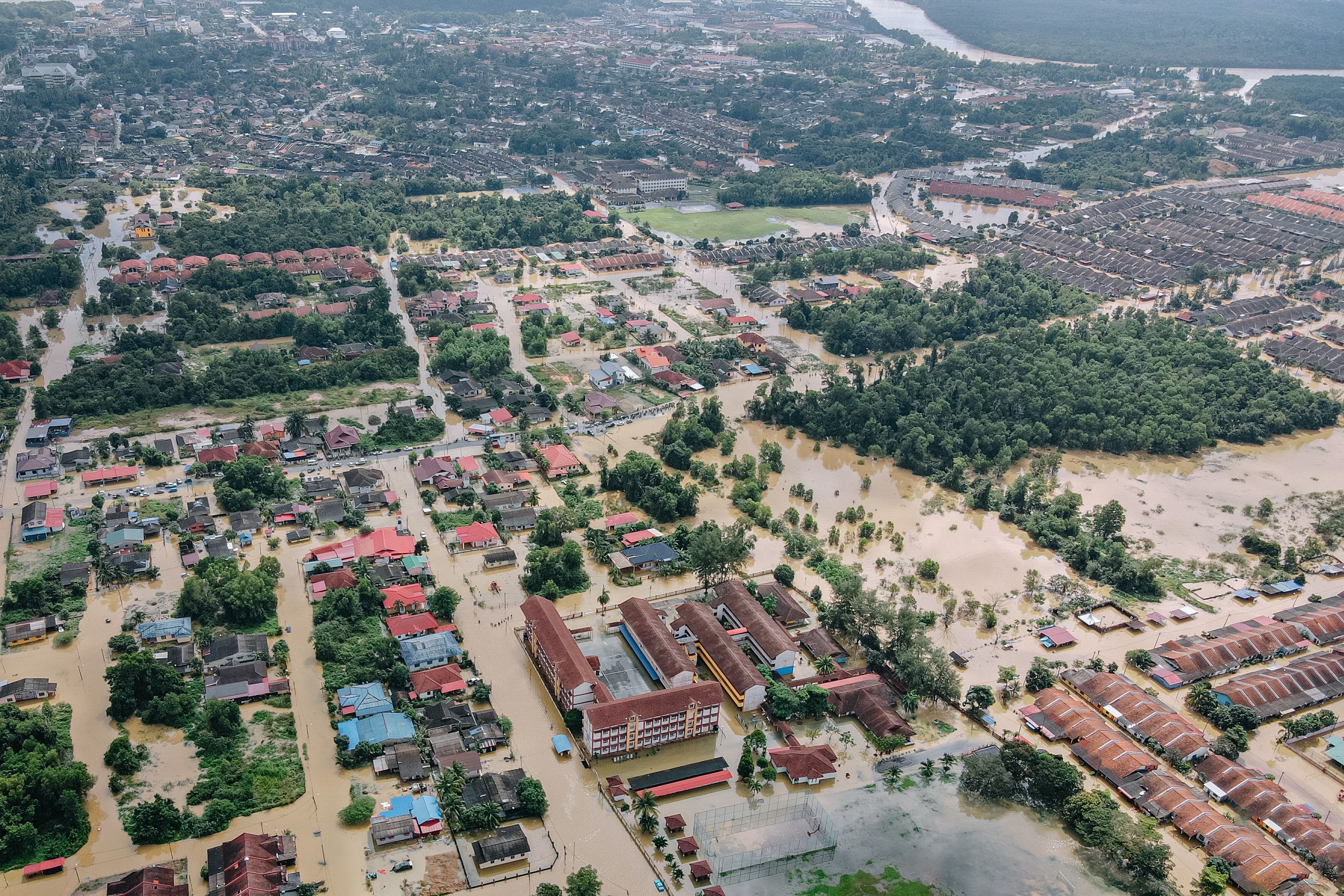Climate Change Enables a Rise in Infectious Disease
As greenhouse gas emissions result in floods, heat waves, and more extreme weather events, people and pathogens are thrown closer together.

As if the prospect of the sheer planetary destruction climate change can cause isn’t enough to worry people, researchers say climatic hazards can facilitate transmission of various diseases and amplify their deleterious consequences on our health.
That’s right: The floods, heat waves, droughts, and other calamities caused by excessive greenhouse gas emissions also make us more vulnerable to ill effects of pathogens such as bacteria, viruses, plants and fungi, according to a new study by a team of earth and marine scientists published in Nature Climate Change.
Using Google Scholar, the team engaged in multiple database searches to find literature highlighting the connection between climate change and pathogenic disease, beginning with entering the term “disease” along with each of 10 separate climatic hazards–environmental warming, drought, heat waves, wildfires, heavy rains, flooding, storms, sea level rise, ocean climate change, and changes in natural land cover such as deforestation.
The next step involved searching for individual disease names, such as leprosy or meningitis, that appeared in infectious disease databases. Then all of the disease/climate hazard combinations found were entered into a table, with additional searches carried out based on potential combinations of specific diseases and climate hazards that until that point had not yielded any connections. For this last step, alternative disease names were used to ensure that no information was missed.
The team’s efforts encompassed more than 77,000 separate pieces of literature and turned up 3213 case examples in which climate hazards impacted the course of pathogenic diseases. Out of 375 separate infectious diseases known to afflict people globally, the study concluded that 218–or 58%—are worsened by the effects of climate change.
Why is this so? The reality is that climate change brings pathogens physically closer to humans. For instance, the warming of the planet allows insect populations, such as mosquitoes, ticks, and fleas, to venture farther afield than ever before, potentially infecting a greater number of people. Pathogens that previously would have been killed off in winter may now survive the season as the temperature remains moderate. Drought and fire can cause vectors such as bats, rodents, and primates to forage for food in expanding geographical areas. Even sea warming can have a negative impact by enabling the expansion of the populations of toxic ocean creatures, such as jellyfish.
At the same time, climate change moves people physically nearer a variety of pathogens. An increase in air temperature means more people cool off in lakes and rivers, leading to a spike in water-borne infections such as amoebic meningoencephalitis and gastroenteritis. Storms and floods displace people from their homes, indirectly leading to an increase in ailments such as leptospirosis, giardiasis, and respiratory and skin diseases.
As the planet has heated up in recent years, so have disease outbreaks. “We’ve observed large epidemics of diseases, especially after unseasonal swings in climate,” Jonathan Patz, MD, MPH, director of the Global Health Institute at the University of Wisconsin-Madison and an author of the study, told Contagion. “For example, the largest epidemics of mosquito-borne dengue fever have occurred in Southeast Asia following strong El Niño events, accompanied by very hot temperatures. Likewise, just before Zika virus erupted in 2016, Brazil and Colombia experienced the hottest summer temperatures in more than 60 years.”
Early disease surveillance is important as the climate changes, according to Patz, but also crucial is changing the way in which we treat the earth. “We need to reduce the destruction of natural habitats that maintain biodiversity, which in many cases prevents the emergence or resurgence of infectious diseases,” he said.
